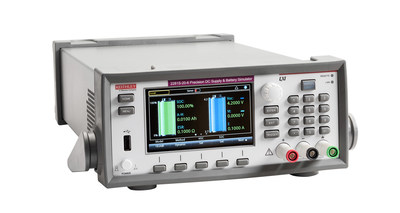It was a busy week for the test industry, as vendors showcased their wares in support of the wireless ecosystem’s continuing evolution and addressed current trends that ranged from heterogeneous networks to LTE-Advanced, multiple input/multiple output over-the-air testing and the “Internet of Things.” Here are some of the highlights in new products and testing milestones that came out of CTIA’s 2015 Super Mobility conference:
• Azimuth Systems launched a channel emulation solution for hetnet testing designed to replicate complicated network conditions with multiple cell sizes in the lab by defining interfering cells, creating an environment where the cells are used and supporting hetnet-specific test scenarios including variations of inter-cell interference – ICIC, EICIC and FelICIC for hetnets that leverage LTE-A. The Virtual Network Environment Testing runs on Azimuth’s ACE RNX platform and is controlled by its Director 3 test software (pdf).
“Testing [hetnets] in the field, though required, is not realistically scalable given the typical challenges associated with field-testing (e.g., cost, lack of control, lack of repeatability) and the increasingly complex hetnet environments being deployed,” according to an Azimuth statement. The company said that re-creating realistic hetnet environments in the lab hasn’t happened until now “as legacy tools were either too complex or inadequate to accurately replicate the environment. This lack of lab-based tools has forced OEMs and operators to spend more time, resources and money validating and debugging issues in the field.”
Azimuth said that it already has two customers, a “leading small cell vendor and a wireless infrastructure provider,” using the ACE RNX platforms (pdf) for testing small cells and hetnets.
• Anritsu said it has completed validation of all LTE-A three-component-carrier aggregation acceptance test cases for an unspecified “large North American carrier with a leadership position in carrier aggregation deployment.”
As far as products, Anritsu launched a new modular Remote Spectrum Monitor solution designed for automating spectrum policy enforcement, detecting interference and radio surveillance. The system has two spectrum monitoring modules to start, which check for interference and can approximate where the interference is generated. Anritsu also added a common public radio interface radio frequency testing option to its BTS Master handheld equipment for testing remote radio heads.
The test company demonstrated LTE Cat-0 for IoT capabilities this week at the show with Altair Semiconductor.
• Deviser Instruments added to its product portfolio with instruments combining cable and radio frequency measurements. Mike Tolaio, VP of sales and marketing for the company, said the new E7042B and E7062B SignalProfiler products were driven by customers’ desire to combine wired and wireless testing capabilities in a single instrument.
The SignalProfiler models can perform fiber inspection, spectrum analysis and interference analysis, signal coverage mapping, cellular signal demodulation for network technologies up to and including FDD and TDD LTE, and RF/optical power measurements, according to Deviser. Tolaio also said that the equipment is configurable and that when a customer buys the equipment with some features enabled, other features can be turned on at any point without needing to be sent back to Deviser. For example, he said, some customer segments “don’t really have a need for fiber installation, but they want to buy a tool that has the ability to evolve as their test needs evolve, so they can go in and add a fiber measurement package at a later date without having to send the tool back.”
• Anite, now part of Keysight Technologies, made sure to let the industry know that its Propsim Channel Emulator is ready for the upcoming CTIA MIMO over-the-air testing, which will soon be required (read more about CTIA’s MIMO OTA testing here). Anite said it’s the only vendor that supports the testing requirement for eight dual-polarized antennas in an anechoic chamber, and can expand to 16 antennas for testing larger devices. The company announced earlier this year that it will be working on MIMO OTA testing with researchers in China.
Anite also said this week that its testing systems will have greater integration with Nokia Networks‘ operating support systems interfaces. The two companies have signed an agreement that gives Anite’s Nemo analytics products access to those interfaces for more accurate and comprehensive insight to achieve network optimization. The agreement comes under the Operations Support Systems interoperability initiative, or OSSii, initiated by Nokia, Ericsson and Huawei.
• Keysight, meanwhile, announced another “5G” partnership. It is collaborating with the University of Bristol on developing 5G wireless technologies in the millimeter-wave range. They plan to work on millimeter-wave radio channel measurements and simulation by combining Keysight’s channel-sounding hardware and software and the university’s advanced antenna and ray-tracing technologies.
• Tektronix launched a new simulator (pictured below) that is designed to emulate battery performance all the way from full charge to total discharge, addressing challenges in mobile devices that draw a range of load currents. Tektronix claims the Keithley 2281S Battery Simulator and Precision DC Power Supply products offer the industry’s first emulation of battery performance from full charge to total discharge using a battery model that includes state of charge, amp-hour capacity, equivalent series resistance and open-circuit voltage.

Mike Flaherty, GM for the Keithley product line, in a statement said the new equipment “represents the industry’s first ‘dynamic’ battery simulator and eliminates the need for using different types of real batteries during performance testing, which greatly reduces test times and improves accuracy and flexibility.”
It also includes a DC power supply.
• Rohde & Schwarz supported the ultra-HD/4K live transmission of a German soccer match last month with high-dynamic-range technology supported by its R&S AVHE100 headend. Rohde said the HDR technology allows future televisions to display a greater range of colors as well as more detailed light and dark differentiation.

